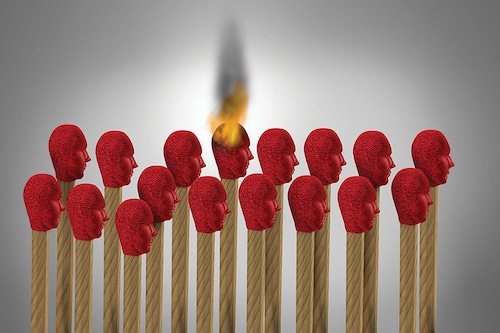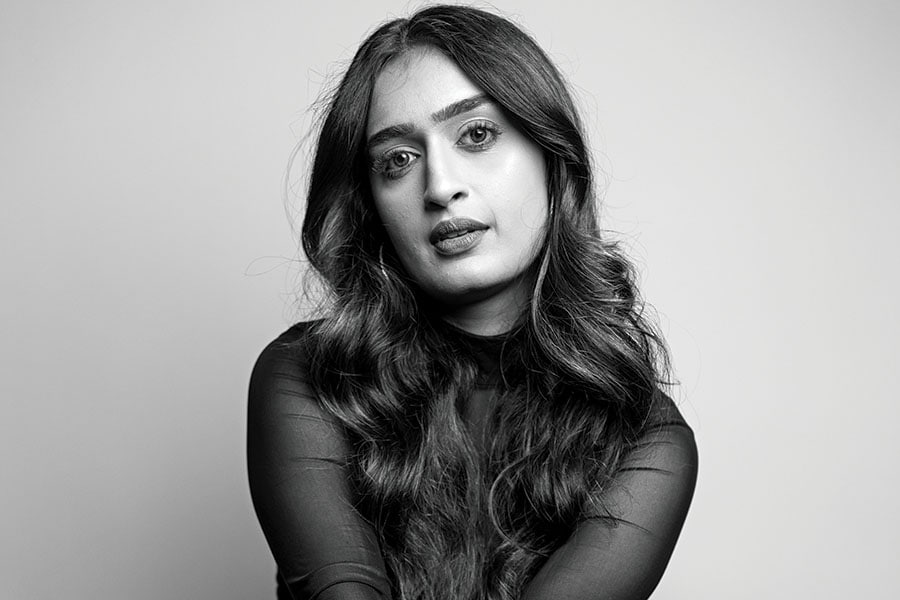The great Indian influencer burnout
Most established digital stars have been battling algorithm changes, negativity and a constant churn of ideas for years together. Content fatigue is catching up—and the younger ones aren't immune eith


Sahil Shah is 32, has a million X (Twitter) followers, and is tired.
Shah is a Mumbai-based comedian whose career took off 13 years ago, while he was still in college, from being funny on social media—and even today, that’s a big part of what keeps it going.
“We’re living in the attention economy. Social media apps are thriving on people’s attention, and we are relying on that attention too to keep us going. So, it is very, very easy to get burnt out," he says. “I have some jokes written that I need to shoot today, but I’m just feeling… tired."
Shah is among the early crop of internet personalities in India, who recognised that social media could lead to a viable career back in the early 2010s. He is also among a large chunk of India’s content creators that is facing fatigue and burnout, exacerbated by the many algorithm changes that social media apps decree, and not least by the constant fielding of negativity thrown at them online.
According to an international survey titled ‘Creator Mental Health Report’ by social media management platform Later, 43 percent of creators are facing social media burnout on a monthly or quarterly basis, and an additional 29 percent are struggling weekly or daily.
The main factors contributing to this include pressure to grow their following comparing oneself to other creators the need for round-the-clock creativity and originality blurred lines between work and personal life and constant platform and algorithm changes.
Also see: Digital Stars 2023 List
“I’ve seen that creators typically face content fatigue within about three years of being online," says Viraj Sheth, co-founder and CEO of Monk Entertainment (Monk-E), a digital media organisation that deals with influencer marketing as well as social media strategy. “With the frequency with which a lot of creators make content, almost all creators go through creator block or content fatigue. And eventually, there comes a time when they either need external help, in terms of a team of writers, or they begin to pivot their content."
 Fashion content creator Masoom Minawala, has unquestionably experienced content fatigue in the last year
Fashion content creator Masoom Minawala, has unquestionably experienced content fatigue in the last year
Fashion content creator Masoom Minawala, who has been in the field for over a decade, says that in the last year, she has “unquestionably experienced content fatigue".
“I recently had a baby, and I felt it quite heavily. I found myself operating as a completely different person from who I was just a year ago, yet my content hadn’t evolved to reflect this new identity. It took me a while to realise that I had been creating content from the perspective of a woman who didn’t even exist anymore," she says.
The pressure to maintain her previous content style and audience expectations added to the exhaustion. “Trying to balance these expectations with my evolving identity became overwhelming, leading to creative burnout," she adds.
This sort of creative block isn’t new—professionals in other creative fields have been facing it for generations. What is new to this generation, however, is that their audience has direct access to them 24x7, and that while it’s a creative profession, it’s also a game of numbers.
“It’s numbers over quality, as simple as that," says Shah. “For example, if a project needs an actor—and any budding actor will tell you this—the casting director will ask, ‘how many followers do you have?’ It’s unfair, because even if you just want to be a serious actor, you’re forced to be on Instagram and do Reels to build an audience."
 Jannat Zubair Rahmani was hit with all kinds of hate, first on TikTok (now banned in India), then on YouTube in 2020
Jannat Zubair Rahmani was hit with all kinds of hate, first on TikTok (now banned in India), then on YouTube in 2020
Shah speaks about how he’s had phases of feeling demotivated, because even if he thinks he’s putting out some of his best work, it isn’t getting the traction he thinks it deserves. “You could spend days shooting a video, and then just a few thousand people will see it," he says. “It really makes you question that labour you put in."
Traction remains a numbers game, and one that the social media platform controls. With constant algorithm changes, it’s becoming exceedingly difficult to know how to best reach your audience. Moreover, each platform has its own such ever-changing formula—and it seems between X, Instagram, YouTube and now Threads, creators have to build different, platform-centric personas and communities. Even within just Instagram or YouTube, there’s a pressure to do different kinds of content—posts, videos, shorts or stories, even a supposedly intimate ‘broadcast channel’.
Many A-list digital comedy creators or entertainers find themselves acting in mainstream movies, such as Prajakta Koli, Viraj Ghelani, Dolly Singh and Kusha Kapila. However, for Jannat Zubair Rahmani, it worked the other way around.
Rahmani started her career as a child actor at the age of six, and at 18, decided to take a break from television acting. “So, I suddenly had a lot of time and was a bit bored," she says. “My brother suggested I try making a trending video, and before we knew it, my videos were garnering millions of views."
This was in 2019. Then the 2020 lockdown hit, and while Rahmani can’t put her finger on what brought about the change, suddenly, she was hit with all kinds of hate, first on TikTok (now banned in India), then on YouTube. “It seemed to be spreading, and I didn’t understand it. I wasn’t bothering anybody. I was minding my own business, as I had been doing, and making short videos. But the comments were becoming very, very harsh, and not just about me—about my parents, my brother. Coupled with the isolation of lockdown, that was a really tough time for me," Rahmani says.
The negativity was everywhere—in comments, DMs, and no matter whether what she posted was a video or a static image. “I couldn’t understand what was going wrong, and it really made me feel very, very anxious and hopeless," she recalls. “My dad had to literally counsel me."
 Comedy content creator Niharika NM says she truly can’t keep up with all the platforms sometimes and she honestly doesn’t want to and that’s okay
Comedy content creator Niharika NM says she truly can’t keep up with all the platforms sometimes and she honestly doesn’t want to and that’s okay
What he said changed her perspective—that when you put something out there for someone to like, they are also free to dislike it, and that’s their right. There’s not much more you can do about it.
Easier said than done, of course, but in a few days, the storm faded, and people moved on. Like Rahmani, most internet personalities have had to train themselves in the ‘chin up’ approach.
When Minawala faces burnout, she is careful to acknowledge it, accept it, and take her time to honestly recalibrate. “My way of coping with negativity is also to confront it head-on. If I find my mistake, I don’t hesitate to admit it and apologise," she adds.
“Of course, therapy helps, and you have to rewire yourself not to let hate get to you. Most people know that you have to build a thick skin if you want to build a career on the internet, so we’re constantly telling the creators we represent to post online, but live their lives offline," says Sheth of Monk-E.
“The career isn’t without privileges, however, there is always a trade-off the fact is that even if you’re doing great work, even if you are changing lives, there will probably be five people hating on you online."
Is internet stardom, then, still the ultimate goal?
Following the Western playbook (à la Kardashian), many Indian content creators have diversified into allied industries depending on their own genre, including drumming up beauty and fashion brands acting in films or expanding into other branding and digital media enterprises.
“Of course, I’m looking at avenues beyond. We all should," Niharika NM says. “I’ve always been extremely ambitious and hardworking and I chase growth—and it is quite important for my mental health as well."
“It depends on the creator, but we’re seeing that some are viewing it as a means to an end," says Sheth. “Being a creator gets you distribution, eyeballs, access, money. Through all this, you can either choose to retire by investing all that money, or say, hey, I’m not done yet, and build a larger business or an allied career. It depends on your ambition."
First Published: Nov 03, 2023, 16:24
Subscribe Now